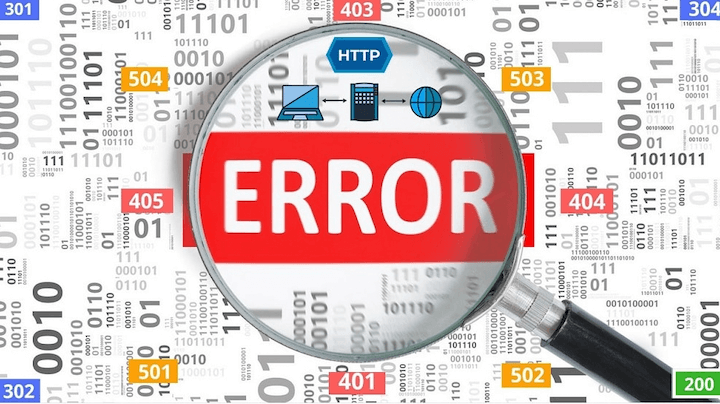How to Troubleshoot Common Proxy-Related Issues

In the realm of internet connectivity, proxy servers play a crucial role. These entities act as intermediaries between your computer and the websites you wish to visit, providing an extra layer of privacy and security. However, like any other technology, they’re not immune to issues. Understanding how to troubleshoot these problems can save you significant time and frustration.
Understanding Connection Difficulties

Before diving into the troubleshooting process, it’s vital to understand what proxy-related issues are and how they can manifest. So, these issues generally refer to problems that occur during the interaction between your computer (the client) and proxies. They can materialize in various forms, impacting your browsing experience, and may result from multiple causes.
Typically, these problems emerge as error messages when accessing websites, slow internet connection, or even the complete inability to establish an internet connection. More specifically, you may encounter messages like “Proxy server is not responding,” “Unable to connect to the proxy server,” or a proxy time-out error.
Several factors can cause these problems:
- A common cause is incorrect server settings, including an incorrect IP address or port number.
- Network issues such as poor connectivity or a firewall blocking the connection can also be at the root of the problem.
- Additionally, issues may be due to the proxy itself, such as when the server is overloaded with too many connections, undergoing maintenance, or experiencing other technical difficulties.
Understanding these common manifestations and causes of connection problems is the first step toward effective troubleshooting. The following sections will guide you in addressing these issues and ensuring a smoother browsing experience.
Typical Connection Difficulties and Their Solutions

Problem 1: Intermediary Connection Failure
Explanation of the issue: Intermediary connection failure arises when your computer fails to connect to the specified intermediary. This results in the inability to access the internet through proxies.
Possible causes: The problem could arise due to network problems, server downtime, or incorrect proxy settings on your computer.
Step-by-step troubleshooting guide:
- 1. Check your internet connection: Try accessing the internet without using the proxies to confirm whether the internet connection is functional.
- 2. Check proxy settings: Make sure the proxy settings on your device, including the IP address and port number, match those provided by your proxy.
- 3. Contact network administrator or proxy provider: If the problem persists, there might be problems with the server itself. Reach out to your network administrator or the proxy provider for assistance.
Problem 2: Intermediary Authentication Error
Explanation of the issue: A proxy authentication error occurs when the proxy server does not accept the authentication details provided by your computer.
Possible causes: Incorrect username or password or difficulties with your access rights on the intermediary.
Step-by-step troubleshooting guide:
- 1. Check your login credentials: Ensure you enter the correct username and password for the proxy server.
- 2. Check access rights: If you are confident about your credentials, there might be an issue with your account’s access rights. Contact your system administrator to verify.
Problem 3: Slow Connectivity with Intermediary
Explanation of the issue: In some cases, you may be able to connect to the proxy server, but the connection speed is noticeably slow, affecting your browsing experience.
Possible causes: High intermediary usage, poor quality of your internet connection, geographical distance, or technical problems with the intermediary itself.
Step-by-step troubleshooting guide:
- 1. Try connecting at different times: High server usage during peak times can slow your connection. Try connecting at various times to see if the speed improves.
- 2. Test your internet speed: Use online tools to test your internet connection’s speed. The issue might be with your internet connection if the speed remains slow, even when you don’t use a proxy server.
- 3. Contact the server provider: If the problem persists, contact your server provider, as there might be technical problems on their end.
Problem 4: Unresponsive Intermediary
Explanation of the issue: An unresponsive intermediary is when the intermediary does not respond to your connection requests.
Possible causes: Server overload, server downtime, or network issues on your end can also cause an unresponsive intermediary problem.
Step-by-step troubleshooting guide:
- 1. Check server status: Visit the server provider’s website or contact them to check if the server is down or undergoing maintenance.
- 2. Check your network: If the server status is okay, check your network settings and connectivity to ensure they’re not causing the issue.
Problem 5: SSL Proxy Errors
Explanation of the issue: SSL errors occur when there is a problem establishing a secure connection to the proxy server.
Possible causes: The potential causes can be problems with the server’s SSL certificate or your browser’s inability to establish a secure connection.
Step-by-step troubleshooting guide:
- 1. Update your browser: Make sure your browser is up-to-date, as outdated browsers might not support the latest SSL certificates.
- 2. Check the server’s SSL certificate: Contact your server provider to check for any issues with their SSL certificate. It might be expired, self-signed, or incorrectly set up, which can cause these errors.
Preventive Measures to Avoid Proxy-Related Difficulties

While understanding how to troubleshoot proxy-related issues is crucial, preventing these problems is equally, if not more, important. Here are some preventive measures to consider.
Routine Checks and Maintenance of Proxy Servers
Regular maintenance of your proxy servers is vital. It includes regularly checking for any possible issues and rectifying them before they escalate into serious problems. It can involve checking server logs, running diagnostic tests, and ensuring the server is not overloaded.
Importance of Keeping Software and Firmware Up-To-Date
It’s essential to keep your server software and firmware up-to-date. Updated software and firmware often include security patches and bug fixes that can prevent many potential issues. It also ensures that your server remains compatible with updated devices and applications.
Ensuring Proper Configuration and Security Measures
Proper server configuration is vital to preventing proxy-related problems. It includes correctly setting the IP address, port number, and other necessary details. Implementing robust security measures such as firewalls and encrypted connections can prevent unauthorized access and secure your proxy server from potential threats.
Regular Monitoring of Performance and Addressing Anomalies Promptly
Regularly monitoring your server performance can help identify any anomalies that may indicate a problem. This can include monitoring the load on the server, the speed of the connection, and any unusual activity. You should promptly investigate and address any anomalies to prevent potential issues from escalating.
These preventive measures can significantly reduce the likelihood of encountering proxy-related difficulties, ensuring a smooth and secure browsing experience.
Additional Insights
To delve deeper into the topics discussed and to troubleshoot proxy-related issues effectively, you may use the following resources:
- Address the article from Lifewire to better understand bandwidth and its importance in internet connectivity. It can become your valuable resource to help you understand how bandwidth impacts your proxy server’s performance and how insufficient bandwidth can lead to slow connections or even connection failures.
- The guide on proxies and tunneling from Mozilla Developer Network explains proxy servers and HTTP tunneling. It discusses the role of proxies in navigating through different internet networks and how HTTP tunnels facilitate access to web content. The article also discusses forward and reverse proxies, providing insights that can help diagnose and resolve common proxy issues.
- Study this guide from Cisco for a clear explanation of the difference between transparent and forward proxy modes. It’s a powerful resource for anyone dealing with proxy-related issues, as understanding these modes can help resolve such problems.
Remember, while these resources provide excellent guidance, the dynamic nature of technology means that the solutions differ based on the unique characteristics of your setup and infrastructure. Stay updated with recent developments and learn new techniques for troubleshooting and maintaining proxy servers.
Conclusion
Navigating the world of proxy servers and dealing with related problems can seem daunting, but these issues become manageable with the proper understanding and a systematic approach. Remember that troubleshooting is only one part of the picture. Equally important is adopting a proactive approach to server management. With the knowledge you’ve gained from this article, you’re well on your way to becoming proficient in handling any proxy-related issues that come your way. So, keep learning, stay proactive, and confidently surf the web.
